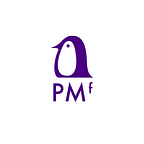It’s not Product-Market fit, it’s PMT(e).
This is a 6 part series on Effective Techniques in Pitching for BD & Sales. Read the other parts here:
1). I want to be a founder but:
2). 50,000 ft., 500 ft. rule
3). It’s not Product-Market fit, it’s PMT(e)
4). 8 Rules for Founders Who Pitch
5). 3 Effective Traits of All Good BD People
6). The Difference Between BD & Sales
One of the great things of doing office hours is that I have to articulate clearly my thoughts on Product-Market Fit: what it means, how to achieve it, and how it pertains to the early stage start-ups that I advise.
Recently, I’ve been developing a methodology called PMT(e). I’ll quickly summarize it here and maybe expand it into a medium post later. Disclosure: I’m personally using PMT(e) in my current endeavor, a multi-cultural festival in Taipei in early March called SlashieFest 斜槓生活節.
//
P = Problem, or problem statement. This is the “what”. Being able to frame this correctly is absolutely crucial. Note that P does not stand for product, it stands for problem.
*METHODOLOGY: I use focus groups and surveys to correctly articulate the problem statement I want to solve.
M = Market. Meaning, size and segmentation of market. If you’ve captured the problem statement correctly, the next question is “how many similar people have this problem?” This doesn’t need to be a huge number if you’ve really nailed the problem statement, but IF this is a huge number, then you have more room for error in the product development cycle.
*METHODOLOGY: There’s different methodology you can use here, but they will all involve some level of market sizing.
T = Timing. I’ve really struggled to encapsulate this. Timing here represents how significant the “need” is for the problem. Is Timing correct when you can prove a lot of people are searching for the specific problem statement you’ve outlined? Probably yes. But, what if there are a lot of competitors out there already? Then, timing is poor because you’re in a very saturated “red” ocean. For me, timing here needs to show that a lot of people are searching for the specific solution that your problem statement addresses AND they’re not able to find a/entire solution that fits their needs.
*METHODOLOGY: One way I’ve seen this done effectively is using Google Trends to show an INCREASING number of searches on the PROBLEM you’re addressing. It matters that it’s increasing because that shows more and more people are looking for a solution and (likely) not resolving it. Because if they had resolved it, then they would just search for the brand that solved it. For example, I’ve included four Google Trend searches below:
The first one shows searches for online food deliveries. It peaked in March/April, presumably because of COVID. IF you just looked at this chart, you probably think Timing is good. But, the second one adds the three leading companies onto the same Google Trends graph. Now you’ll see that searches for each of the companies is much higher than the problem itself. Meaning, most people already know the brands of the largest companies so this is a saturated market. Not a good idea to launch a competing online food delivery product.
The third Google Trends graph is probably one that shows good Timing. CRISPR is a type of live science or gene editing that can be used for all sorts of things (note: I paraphrased that from the internet and am definitely not an expert on CRISPR). When I overlay it with the 4 top CRISPR company stocks, you can see that CRISPR is still much more searched than the companies themselves. Contrast that with the 4th graph which is “dancing robot” and “Boston Dynamics”. It’s probably safe to say that people already equate dancing robots with Boston Dynamics. Probably not a good idea to launch a competing dancing robot company right now….or IS IT???
(e) = Emotion. For early stage companies that don’t have traction or a track record, I think it’s super important that the founder or product owner tell an emotional story to why he/she is developing this product. It doesn’t have to be a personal story (though those often are the best), but it needs to hit on the point of “why”. Why are you doing this? Why is this important? Examples of this are abundant: climate, food sustainability, world poverty, and most types of social entrepreneurship. Really showing the “why” you are so passionate about this product often will push the buyer/partner/investor over the goal line in deciding to work with you.
So tl;dr…when you’re thinking about developing product and product-market fit, you can give Problem-Market-Timing-(e)motion a try!
